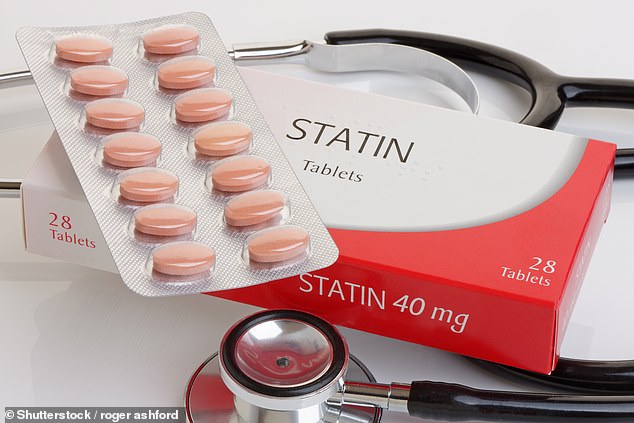Most of the adverse side effects associated with statins are “all in the head,” doctors claim.
One in four adults in Britain take cholesterol-lowering pills every day to protect themselves from strokes or heart attacks in the future.
Due to side effects such as muscle pain, sleep disturbances and headaches, up to half of patients stop taking the medication or use it irregularly.
But a team of cardiologists estimates that up to 70 percent of symptoms are actually caused by the “nocebo” effect.
Professor Maciej Banach of Lodz Medical University in Poland and his team made the estimate after reviewing 170 studies involving 4 million people.
The phenomenon occurs when someone faces an unpleasant side effect of a medication just because they expected it.
It is the opposite placebo effect seen in people who feel better after receiving a counterfeit drug.
In an editorial published today in a scientific journal, Professor Banach said: "The 'nocebo/drucebo' effect occurs when patients' expectations that they will experience side effects from the statins lead to those symptoms actually occurring.

Statins (pictured) work by limiting the production of "bad cholesterol" - low-density lipoprotein (LDL) cholesterol - which can harden and narrow arteries and increase the risk of cardiovascular disease
“Their knowledge comes from the Internet, brochures, friends and family and other sources, and the most common side effects are muscle pain and liver problems.
“This can cause them to discontinue their therapy, increasing their risk of heart problems, stroke and death.”
Statins work by limiting the production of “bad cholesterol” – low-density lipoprotein (LDL) cholesterol – which can harden and narrow arteries and increase the risk of cardiovascular disease.
Studies have repeatedly proven the drug, which costs less than £5 for a month's supply, saves lives.
Charities claim that around 8 million Britons and 35 million Americans are prescribed the medication, which should be taken daily.
But doctors believe tens of thousands of people die every year because they avoid the life-saving pills, often because of side effects.
In today's editorial, published in the Journal of Cachexia, Sarcopenia and Muscle A team of cardiologists presented a series of recommendations for healthcare professionals who prescribe the drugs.
It primarily advises patients to continue treatments even if they begin to experience mild symptoms.
The document provides advice on how to effectively diagnose statin intolerance and rule out the nocebo effect by testing for common problems such as statin-associated muscle symptoms (SAMS).
Co-author of the publication, Dr. Peter Penson, from Liverpool John Moores University, said: “This is the first paper to explicitly look at the nocebo/drucebo effect.
“It offers practical and evidence-based suggestions that we hope will benefit clinicians in improving patient-centered care for people at risk of cardiovascular disease but experiencing side effects attributed to their medications.
"We hope this document will facilitate shared decision-making between patients and prescribers. The recommendations recognize that the vast majority of patients can take statins safely and that the benefits far outweigh the potential risk of side effects."
The cardiologists based their recommendations on a meta-analysis of 170 studies.
In a study they referenced, 60 patients who had stopped taking statins were asked to take the drugs, a placebo or no treatment again each month in a random order.
Symptom severity was similar in the periods when statins and placebos were taken.
But it was significantly lower if someone had no treatment. It found that half of the patients had restarted their statin treatment after the procedure.

 Suche
Suche
 Mein Konto
Mein Konto

